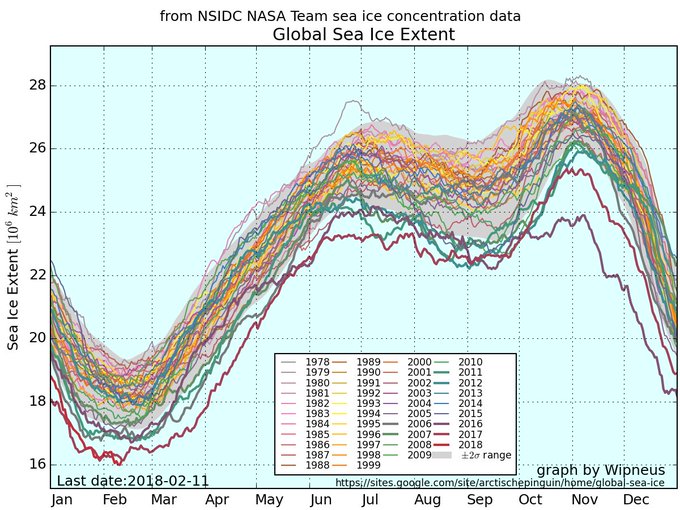Gas Tanker Crosses Arctic In Winter Without Icebreaker Escort For The First Time
In
what amounts to something of a troubling metaphor, a tanker carrying
liquefied natural gas (LNG) has made history: it’s now the first
commercial ship to traverse the Arctic’s northern sea route in
winter.
As
reported by Climate
Home News,
the Eduard
Toll left
its port in South Korea in December for another port in northern
Russia, before completing its journey to Montoir, France. Although it
cut through plenty of rather thick ice on its route, it didn’t need
any assistance from an icebreaker vessel. Its route was filmed via
the crew, which you can watch below, in a rather stunning time-lapse
video.
Back
in August 2017, another LNG tanker achieved the same feat in
the summer,
once again without an icebreaker escort. Clearly, it’s now possible
in even harsher winter conditions.
Each
year, the Arctic’s sea ice normally reaches a maximum extent
between February and April each year. According to the NASA-supported
National Snow and Ice Data Center, since satellites started
continuously measuring sea ice in 1979, its maximum extent has
dropped by roughly 2.8
percent per
decade.
Our
warming atmosphere, and subsequently our warming oceans, is causing
the southern edges of the ice to retreat. We’re going to keep
seeing smaller wintertime maximums as a result, and in fact, since
1979, a winter sea ice cover more than equal to twice
the size of Texas has
been lost.
Once
again, this January, the Arctic sea ice extent reached a new
nadir.
There’s a clear
link to
anthropogenic climate change here; although regional weather
variations can cause minor variations in winter sea ice extents, the
overall trend is clearly one of a cryospheric retreat.
That
means that this tanker certainly won’t be the last of its kind to
make it through the Arctic Ocean in the height of winter with
relative ease. In fact, just recently, Beijing released a white paper
that plotted out a “Polar Silk Road”, which called for greater
focus and international cooperation on shipping routes through the
Arctic as the ice fades from view.
Although
it doesn’t border the Arctic, the white paper – as reported by
the Financial
Times –
noted that “as a result of global warming, the Arctic shipping
routes are likely to become important transport routes for
international trade.” China, of course, wants in.
Although
the government emphasized that environmental protection of the region
was a priority, they did seem keen to explore and utilize any
resources that may lay buried beneath the waves. These resources
include, most probably, oil
and gas reserves.





Feb 13, 2018: This morning the judge dismissed all charges in the lawsuit brought against Tim by BC Green Party leader Andrew Weaver. It is a great victory for free speech.
ReplyDelete‘The Deliberate Corruption of Climate Science’.
https://www.youtube.com/watch?v=tPzpPXuASY8
My website is
“Human Caused Global Warming”, 'The Biggest Deception in History’.
https://www.youtube.com/watch?v=tPzpPXuASY8
https://www.youtube.com/watch?v=sO08Hhjes_0
www.drtimball.com
A lot of us believe that methane will be the final nail in our coffin. Here it comes in the middle of the winter. One point I'd like to make is that the big, heavy tankers when off shore burn bunker fuel. I've seen them mid ocean with miles of black soot clouds above and behind them. This soot will settle on the ice lowering the albedo. The exhaust heat from these ships will be predominantly discharged into the sea. The wave action from this traffic will break up the thin fragile ice. There's three feedback loops already. Have I missed any?
ReplyDelete